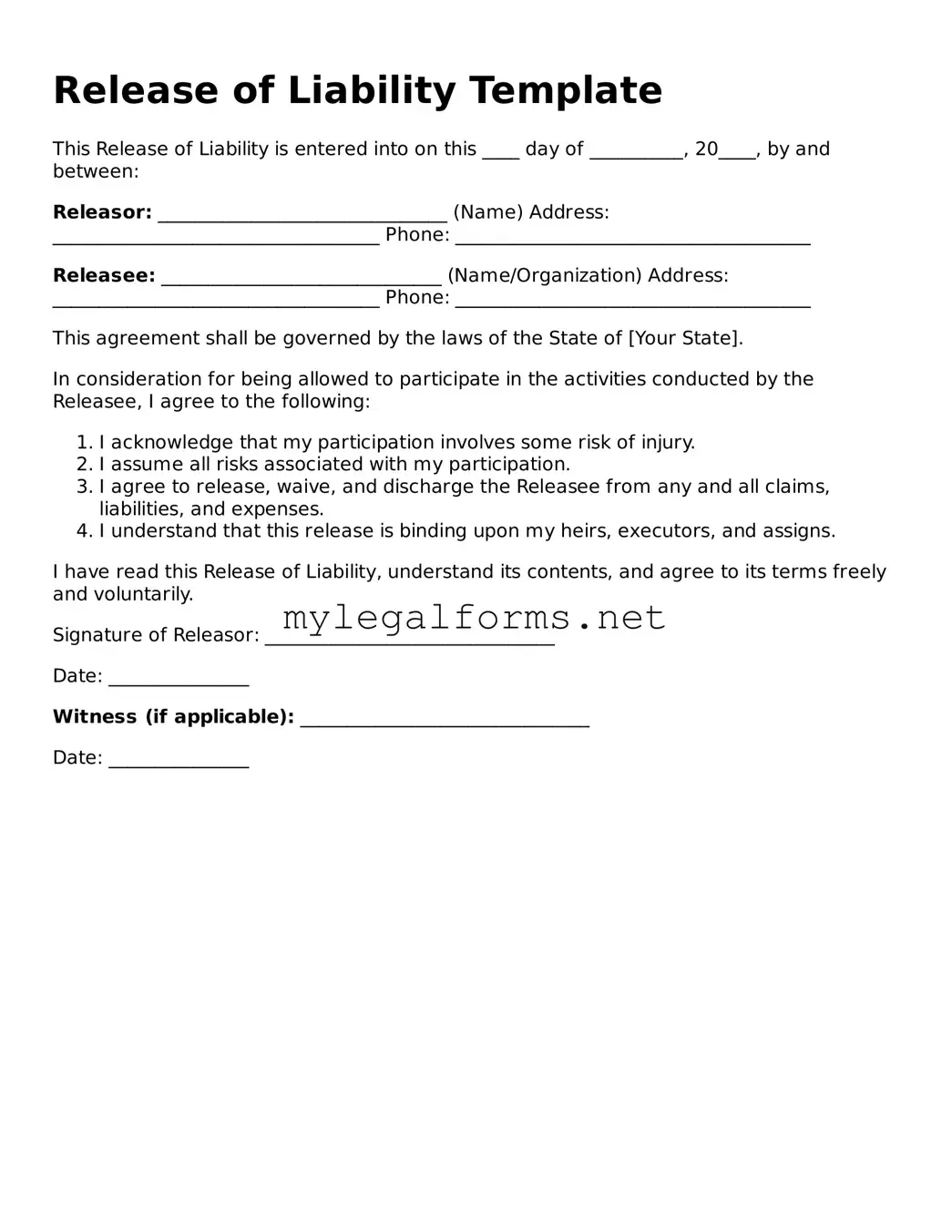Filling out a Release of Liability form can seem straightforward, but many individuals make common mistakes that can lead to misunderstandings or legal complications. One frequent error is failing to read the entire document before signing. This oversight can result in individuals agreeing to terms they do not fully understand, potentially waiving important rights.
Another mistake involves not providing accurate personal information. When names, addresses, or contact details are incorrect, it can create confusion in the event of a dispute. Ensuring that all information is precise is crucial for the document's validity.
People often neglect to specify the activities covered by the release. A vague description can lead to ambiguity about what is being waived. Clear and detailed descriptions of the activities involved help to prevent future misunderstandings.
Some individuals mistakenly believe that a signature alone is sufficient for a Release of Liability to be enforceable. However, many forms require additional elements, such as dates or witness signatures. Omitting these components can render the release ineffective.
Another common error is failing to consider the implications of the release. Many individuals do not fully grasp the extent to which they are waiving their rights. It is essential to understand that signing a release may limit the ability to seek compensation for injuries or damages.
People sometimes forget to consult legal counsel before signing. While it is not mandatory, seeking professional advice can provide clarity on the document’s implications and help individuals make informed decisions.
In some cases, individuals sign the form under pressure or without sufficient time to consider its terms. This hurried approach can lead to regret later, as individuals may not have fully evaluated the risks involved.
Another mistake is failing to keep a copy of the signed document. Retaining a personal copy is vital for future reference, especially if a dispute arises. Without a copy, individuals may struggle to prove what they agreed to.
People also often overlook the expiration dates of the release. Some forms may have a limited duration, and failing to recognize this can lead to confusion about the validity of the release.
Finally, misunderstanding the legal language used in the form can be a significant pitfall. Even if the language seems clear, nuances may exist that could affect the interpretation of the release. Taking the time to clarify any confusing terms can prevent future complications.
